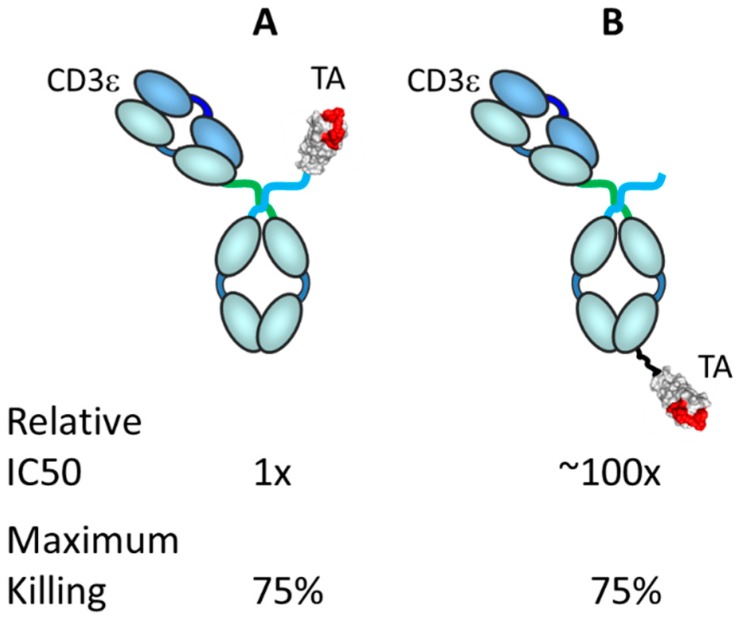Figure 8.
Effect of geometry on in vitro activity of an example TRBA. Cartoon of two antibody-centyrin fusions targeting CD3ε with the Fab arm and a solid tumor antigen with the centyrin (~12 kDa engineered FN3 domain). (A). Centyrin fused to the hinge, making it close to the anti-CD3 Fab arm; (B). Centyrin fused to the C-terminus of the heavy chain, making it distal from the Fab arm. All components, molecule sizes and in vitro killing assay conditions (E:T 5:1, 24 h assay) were identical. Thus, only the architecture and geometry of the two TRBAs are different, resulting in a ca. 100-fold difference in potency. This simple example demonstrates how important the geometry of the binding arms can be in the design of future TRBAs. Data presented were derived from experiments provided Steve Jacobs, Janssen R&D. These data were previously presented at PEGS Boston, April 2018 with permission.

